Yemen
Discover Yemen
Yemen, officially known as the Republic of Yemen, is a country at the southern end of the Arabian Peninsula in Western Asia. It is bordered by Saudi Arabia to the north, the Red Sea to the west, the Gulf of Aden and the Arabian Sea to the south, and Oman to the east. With a rich history dating back to ancient times, Yemen boasts a diverse cultural heritage and stunning natural landscapes.
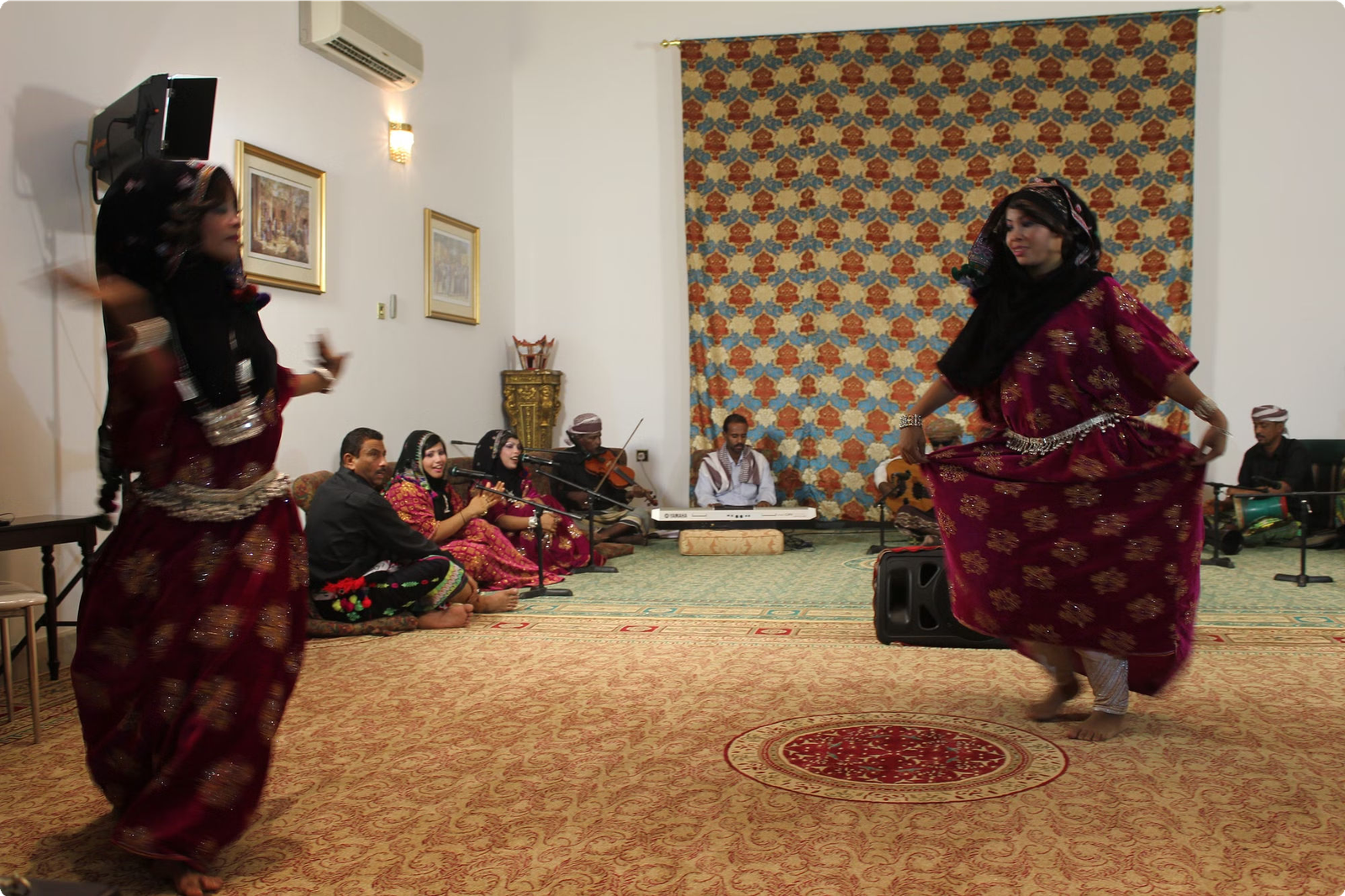
The country is renowned for its unique architecture, including the beautiful clay skyscrapers of Shibam and the ancient Sana’a Old City, which is a UNESCO World Heritage site. Yemen also offers a tantalizing blend of flavors in its cuisine, with aromatic spices and traditional dishes such as saltah and mandi. The traditional dance of Yemen, known as the “mahrajan,” is a vibrant expression of the nation’s cultural identity, showcasing the grace and rhythm of its people.
Yemeni Flag and Its Significance
The Yemeni flag is a tricolour flag consisting of three horizontal stripes of equal width. The top stripe is red, the middle is white, and the bottom one is black. In the center of the flag, there is a depiction of a national emblem – a golden eagle with a scroll in its beak. The red symbolizes the bloodshed of those who fought for independence, the white signifies the hope for peace and prosperity, while the black represents the dark past and the unity of the nation. The national emblem reflects the strength and sovereignty of Yemen.
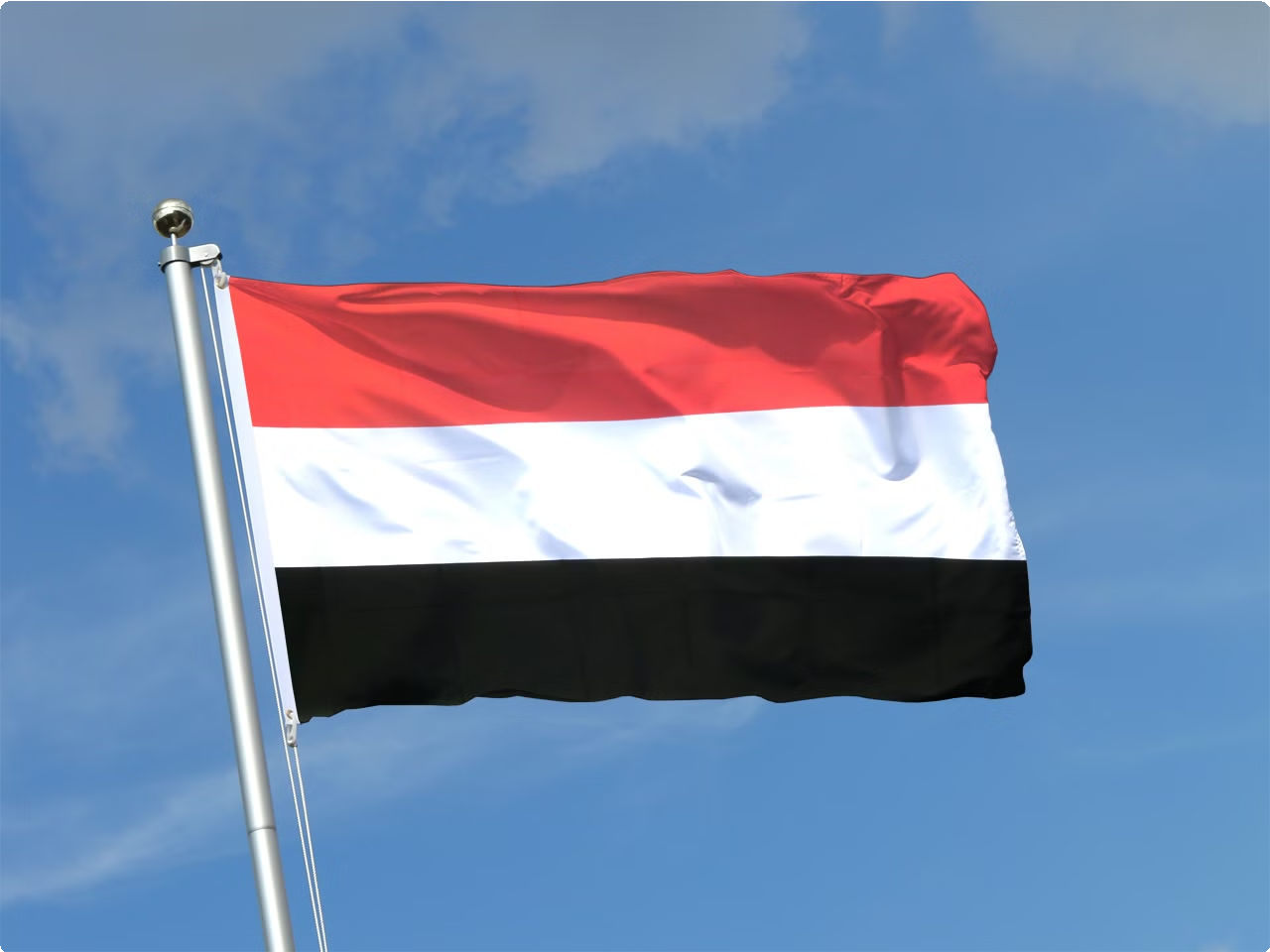
The flag was adopted on May 22, 1990, following the unification of North Yemen and South Yemen. It is an important symbol of Yemeni identity and represents the country’s struggle for independence and unity. The flag holds great significance to the Yemeni people, symbolizing their history, culture, and aspirations for a peaceful and prosperous future.
Geography and Map of Yemen
Yemen, located on the southern tip of the Arabian Peninsula, boasts diverse geographical features. The country is characterized by stunning mountain ranges, including the towering Sarawat Mountains and the Haraz Mountains, which contribute to its breathtaking landscapes. The central highlands and coastal plains add further depth to Yemen’s topography, providing a juxtaposition of lush greenery and arid desert regions.

Yemen is also home to the mesmerizing Socotra Archipelago, known for its unique biodiversity and otherworldly landscapes. The island of Socotra is renowned for its endemic flora and fauna, making it a UNESCO World Heritage Site.
The country’s proximity to the Red Sea and the Arabian Sea has a significant impact on its climate and coastal areas, providing ample opportunities for marine activities and trade. The strategic location of Yemen has historically made it a key player in maritime trade routes.
Currency Used in Yemen
The official currency of Yemen is the Yemeni rial, denoted by the symbol “﷼” or “YER”. It is further subdivided into 100 fils, although the fils coins are no longer in circulation due to their minimal value. The Central Bank of Yemen is responsible for issuing and regulating the currency, ensuring its stability and control within the country’s economy.

Historically, the rial has undergone several fluctuations due to political instability and economic challenges. However, it remains an essential aspect of Yemen’s financial system and plays a vital role in daily transactions, trade, and economic activities across the nation.
In recent years, the exchange rate of the Yemeni rial has been a topic of concern, impacted by various factors such as political instability, conflict, and external economic conditions. Understanding the currency’s value and its impact on the local economy is crucial for anyone visiting or engaging in business activities in Yemen.
Overview of Yemen’s Economy
Yemen’s economy is predominantly based on agriculture, fishing, and small-scale industries. The agricultural sector employs a significant portion of the population, with the cultivation of crops such as coffee, qat, wheat, and fruits. The country also has a thriving fishing industry, with the coastal areas providing ample opportunities for fishing activities.
The economy also relies on the production of crude oil, which contributes a major portion to the government’s revenue. Moreover, Yemen’s strategic location has enabled the development of a modest tourism industry, offering opportunities for economic growth.
Despite these diverse sectors, Yemen faces economic challenges due to political instability, conflict, and limited resources. The ongoing conflicts have hampered the overall economic development, leading to a high unemployment rate and widespread poverty.
Additionally, Yemen has been heavily dependent on foreign aid to meet its fiscal requirements and sustain basic infrastructure. The economy is in the process of recovery and development, with efforts focused on rebuilding key industries and fostering stability for sustained economic growth.
Major Industries in Yemen
Agriculture: Yemen’s main agricultural products include fruits, vegetables, qat, and coffee. The agricultural sector is a significant contributor to the country’s economy, employing a large portion of the population.
Petroleum and Natural Gas: Yemen has substantial reserves of petroleum and natural gas, which play a vital role in the country’s economy. The extraction and export of these resources contribute significantly to the national income.
Fishing Industry: With a long coastline along the Red Sea and the Arabian Sea, Yemen has a thriving fishing industry. The country’s waters are rich in marine life, supporting the livelihoods of numerous coastal communities.
Textile and Apparel: Yemen has a growing textile and apparel industry, producing a wide range of clothing and fabrics for both domestic consumption and export. This sector provides employment opportunities and contributes to the country’s exports.
Yemeni Culture and Traditions
Yemeni culture is deeply rooted in tradition, with a rich heritage that has been preserved for centuries. The culture of Yemen is influenced by its long history, as well as the diverse ethnic groups and tribes that inhabit the region. Family plays a central role in Yemeni society, and traditional values such as hospitality, respect for elders, and community cohesion are highly esteemed.
The traditional attire of Yemen is a reflection of its cultural diversity, with men often wearing a thobe (long robe) and a ma’waz (head wrap), while women don colorful, intricately embroidered dresses and veils. Yemeni cuisine is another integral part of the culture, with its unique blend of spices and flavors, featuring dishes like saltah, mandi, and aseeda.
The art of storytelling, poetry, and music are cherished forms of expression in Yemeni culture, with the melodic tunes of traditional instruments such as the oud and qanbus adding an enchanting allure to social gatherings. Additionally, the architectural marvels of Yemen, including its ancient mud-brick buildings, stand as a testament to the country’s rich cultural heritage.
Traditional Yemeni Dance Forms
Al-Ayyala
Al-Ayyala is a traditional group dance performed by Yemeni men. It involves synchronized movements to the beat of drums and is often accompanied by chanting or poetry recitals. The dancers create a mesmerizing display of agility and strength as they showcase their cultural heritage through this dynamic and lively dance form.

Raqsat al-Asaya
Raqsat al-Asaya, also known as the stick dance, is a traditional Yemeni dance performed by women. It involves rhythmic movements with sticks and often incorporates intricate footwork and graceful gestures. This elegant and spirited dance form reflects the grace and beauty of Yemeni women and is often performed during cultural celebrations and weddings.
Famous Yemeni Dishes and Cuisine
Saltah
Saltah is a traditional Yemeni stew made with a base of meat (usually lamb), vegetables, and a hearty broth. It is served hot and is often accompanied by malawah bread. The rich flavors and aromatic spices make saltah a beloved dish in Yemeni cuisine.

Mandi
Mandi is a flavorful rice and meat dish that is cooked using a special method of smoking. The meat, often chicken or lamb, is marinated with a blend of spices and then slow-cooked to perfection. The aromatic rice paired with tender, smoky meat makes mandi a must-try dish in Yemen.
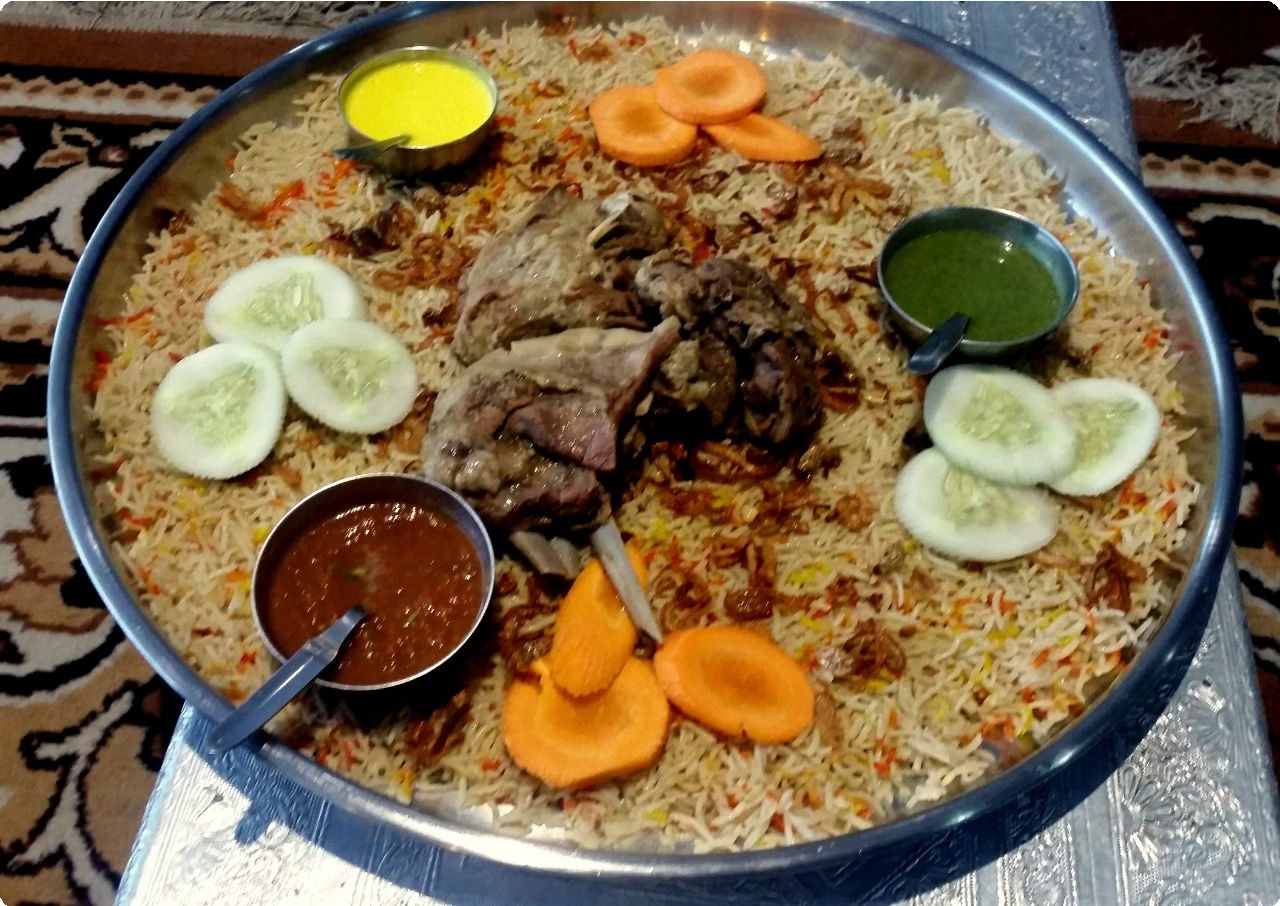
Aseed
Aseed is a staple Yemeni dish made from a thick porridge-like dough that is usually served with meat, vegetables, and a hearty broth. The simplicity and heartiness of aseed make it a comfort food for many Yemenis, and it is often enjoyed with family and friends during special occasions.
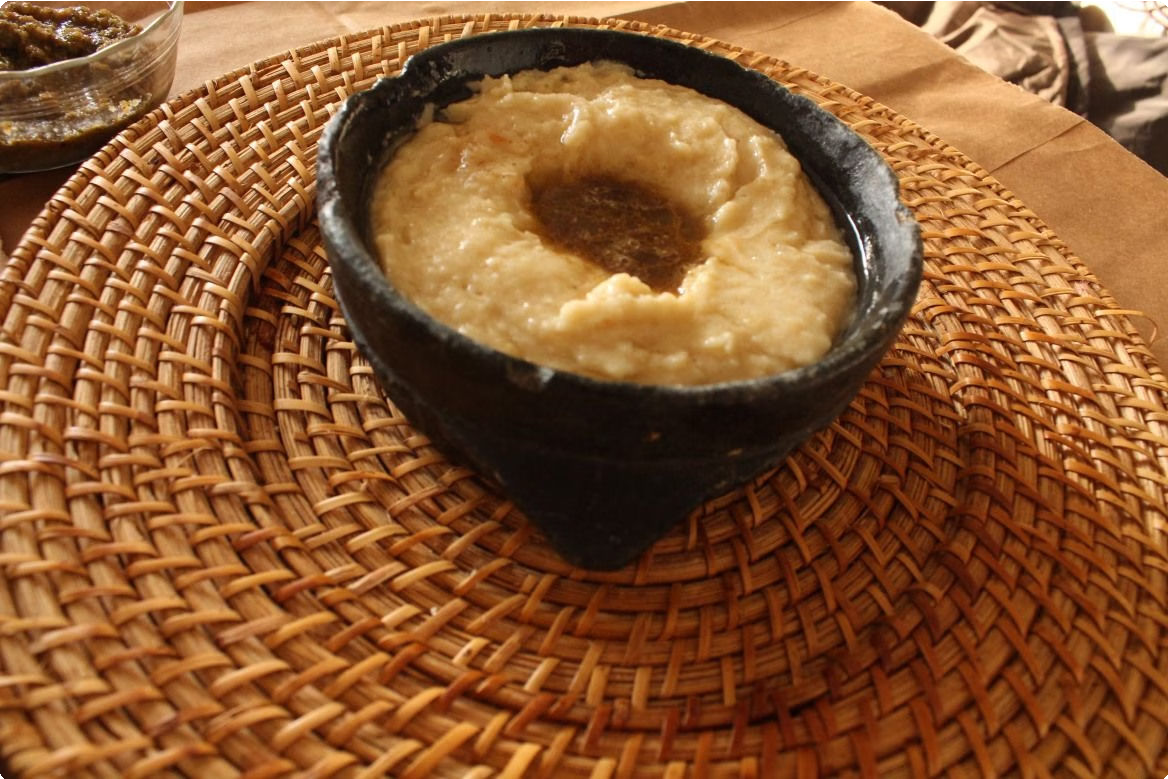
Salta
Salta is a spicy Yemeni stew that typically includes a mixture of meats, such as chicken or beef, and is flavored with fenugreek and other aromatic spices. It is often served with a side of rice and a variety of toppings, allowing diners to customize their bowl to their liking.
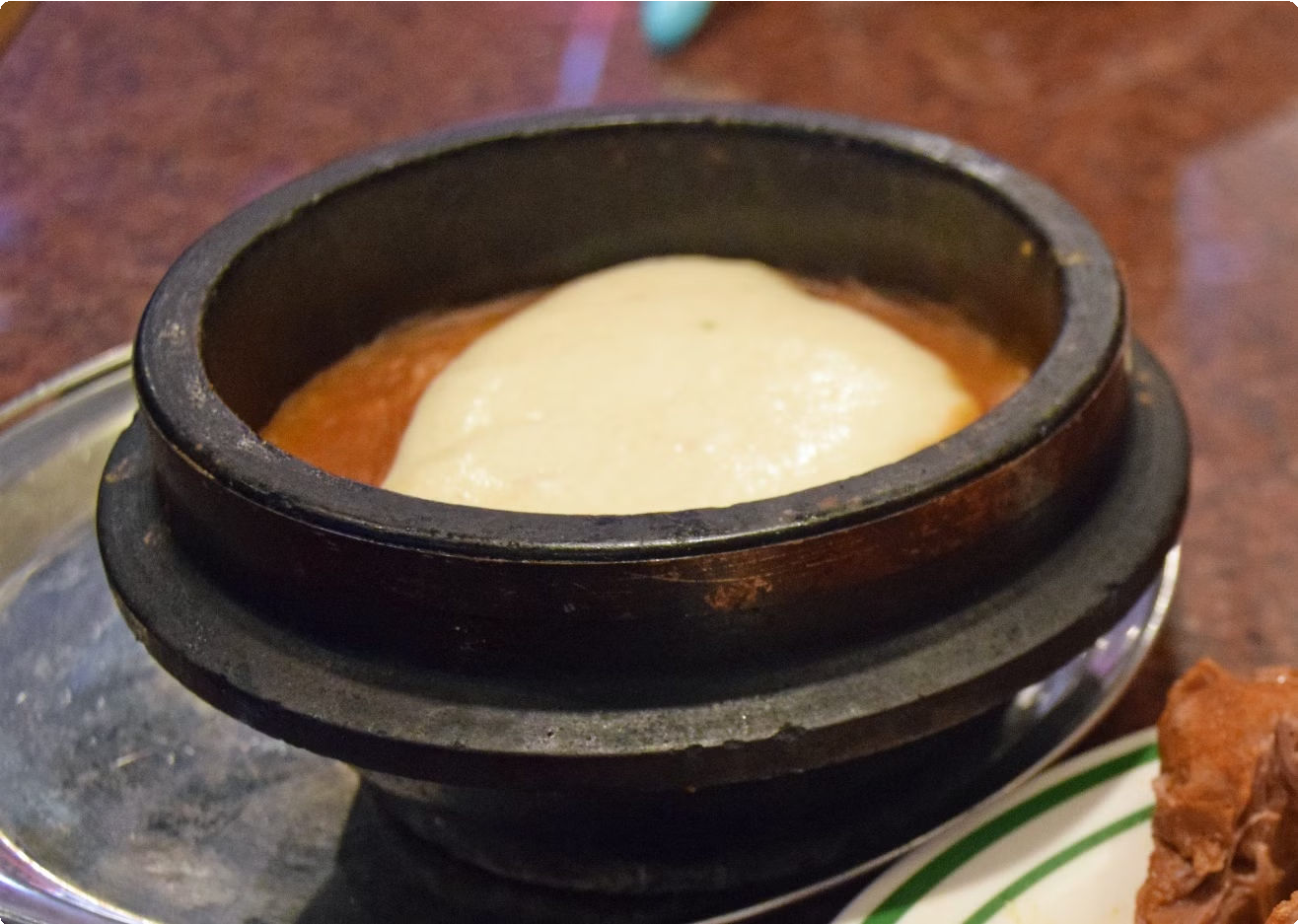
Yemeni Coffee Culture
Yemeni coffee culture has a rich and storied history that dates back centuries. Coffee holds a special place in Yemeni society, with elaborate coffee ceremonies being an integral part of social gatherings. The traditional way of preparing coffee involves roasting the beans over an open flame, grinding them with a mortar and pestle, and brewing the dark, aromatic beverage in a dallah, a long-spouted pot.
One unique aspect of Yemeni coffee culture is the custom of serving qishr, a coffee cherry tea, to guests as a sign of hospitality and respect. The distinct flavors and aromas of Yemeni coffee, often described as earthy and full-bodied, have captivated coffee enthusiasts around the world.
Beyond the beverage itself, Yemeni coffee culture encompasses the art of storytelling, poetry recitation, and engaging in deep conversations while savoring the rich brew. Coffeehouses, known as “maqha,” are popular gathering spots where people come together to enjoy coffee, exchange ideas, and build community bonds.
Yemen’s geographical and climatic conditions contribute to the unique flavors of its coffee beans, making it a sought-after commodity in the global coffee market. The meticulous cultivation and harvesting processes add to the allure of Yemeni coffee, making it an essential part of the country’s cultural identity.
Yemeni Sweets and Desserts
Balaleet
Balaleet is a popular Yemeni sweet and savory dish made with vermicelli, eggs, and sugar, flavored with cardamom and saffron, and often topped with fried onions. It’s a delightful fusion of flavors and textures, combining the sweetness of sugar with the savory notes of fried onions.

Basbousa
Basbousa, also known as hareeseh, is a traditional Yemeni dessert made from semolina, sugar, yogurt, and coconut, soaked in sugar syrup. It has a rich, dense texture and a sweet, floral flavor, making it a beloved treat for special occasions and celebrations.

Kleicha
Kleicha are date-filled cookies that are popular in Yemen and throughout the Middle East. They are often enjoyed during holidays and family gatherings, with variations in shapes and flavors, such as date-filled crescents or flat, round cookies with intricate designs.

Yemeni fashion and clothing
Men’s Clothing
Yemeni men traditionally wear a distinctive garment known as a “futa.” This is a wrap-around skirt made of cotton or wool, typically worn with a decorative dagger called a “jambiya” tucked into the waistband. The futa often features intricate embroidery and patterns, reflecting regional styles and cultural influences.
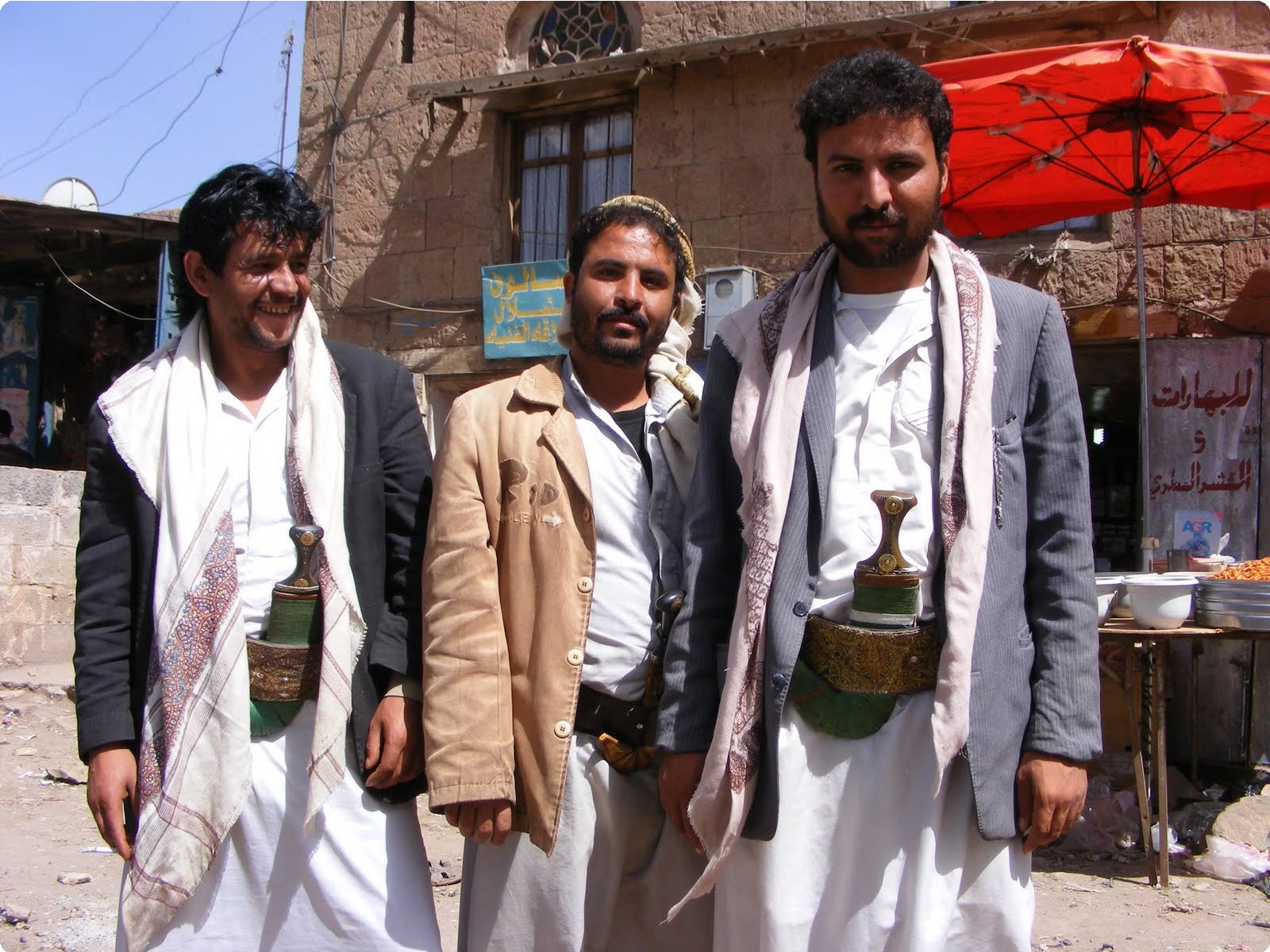
Women’s Clothing
Traditional Yemeni women’s clothing includes the “futah,” a colorful and elaborately embroidered dress often worn with a headscarf. The futah is an expression of cultural identity and craftsmanship, with each region of Yemen showcasing its unique embroidery techniques and designs. The attire is complemented with ornate jewelry, such as necklaces, bracelets, and earrings, further reflecting the rich cultural heritage of Yemen.

Ceremonial Attire
For special occasions and ceremonies, both men and women in Yemen adorn themselves in sumptuous clothing. Traditional ceremonial attire is characterized by vibrant colors, luxurious fabrics, and intricate detailing. Garments are often accessorized with opulent jewelry and ornate headpieces, creating a dazzling display of Yemeni craftsmanship and sartorial elegance.
Yemeni Music and Instruments
Oud: The Musical Heart of Yemen
The oud, often referred to as the “musical heart of Yemen,” is a string instrument that holds deep cultural significance. Its haunting tones and intricate melodies have been a cornerstone of Yemeni music for centuries, with skilled musicians using it to evoke a wide range of emotions and tell captivating stories through music.
Qanbus: Rhythmic Resonance
The qanbus, a traditional Yemeni string instrument, produces a rich and resonant sound that forms the rhythmic backbone of Yemeni music. Played by talented musicians with great passion and skill, the qanbus adds depth and complexity to the musical compositions, reflecting the soul and spirit of Yemeni culture.
Kamanjah: Melodic Expressions
The kamanjah, a traditional Yemeni fiddle-like instrument, is known for its soulful and melodic expressions. Through the skilled hands of musicians, the kamanjah weaves enchanting melodies that capture the essence of Yemeni life, history, and the natural beauty of the region.
Yemeni literature and poetry
Rich Literary Heritage
Yemen has a rich literary tradition that dates back centuries, with poetry being a central element of its cultural identity. Yemeni poetry is known for its expressive language, powerful imagery, and deep emotional resonance, often reflecting on themes of love, nature, and spirituality.
Oral Tradition
Yemeni literature has a strong oral tradition, with storytelling and poetry being passed down through generations. Many Yemeni poets have contributed to the preservation of their country’s history and traditions through their oral compositions.
Calligraphic Beauty
The art of calligraphy holds significant importance in Yemeni literature, with various scripts and styles being employed to adorn the pages of traditional manuscripts, adding a touch of visual artistry to the written word.
Yemeni Art and Architecture
Traditional Architecture
Yemeni architecture is characterized by its unique blend of traditional and Islamic influences. The towering mud-brick buildings known as “skyscrapers of the desert” in Shibam, Hadhramaut Governorate, are a prime example of Yemeni traditional architecture. These high-rise structures, some dating back to the 16th century, reflect the mastery of ancient building techniques and the resilience of local materials.
Traditional Artistry
Yemen boasts a rich tradition of visual arts, including intricate woodcarvings, vibrant textiles, and ornate ceramics. The artistry in Yemen reflects the cultural diversity and historical heritage of the region, with each piece carrying deep symbolic meanings and stories of the Yemeni people.
Calligraphic Masterpieces
Yemeni calligraphy is celebrated for its elegance and sophistication. The intricate curves and flowing lines of Yemeni calligraphy hold significant cultural importance, often adorning buildings, manuscripts, and decorative items as a form of artistic expression and reverence for the written word.
Yemeni Festivals and Celebrations
Sana’a Old City Festival
The Sana’a Old City Festival is a vibrant and lively celebration that showcases the rich cultural heritage of Yemen. It features traditional music, dance performances, local cuisine, and craft exhibitions, attracting both locals and international visitors to experience the authenticity of Yemeni culture.
Adha Festival
Adha Festival, also known as Eid al-Adha, is a significant Islamic holiday celebrated with great enthusiasm throughout Yemen. It includes communal prayers, feasting, and the act of charity, reflecting the spirit of sacrifice and devotion.
National Day Celebration
Yemen’s National Day is marked with patriotic fervor, parades, flag hoisting, and cultural events. It serves as a time for Yemenis to express their national pride and honor their country’s history and achievements.
Yemeni Coffee Festival
The Yemeni Coffee Festival is a celebration of the country’s rich coffee heritage and the art of coffee- making. It brings together coffee growers, roasters, and enthusiasts to taste and appreciate Yemen’s renowned coffee varieties.
Famous Yemeni Celebrities
Ahmed Ali
Ahmed Ali is a Yemeni-American poet and writer whose literary works have gained international recognition. His poetry and prose often reflect the rich cultural heritage and the socio-political landscape of Yemen, captivating readers with his evocative storytelling and profound insights.

Yusra Al-Azhari
Yusra Al-Azhari, a Yemeni actress, is celebrated for her versatile performances in both television and film. Her talent and dedication to her craft have made her a prominent figure in the Yemeni entertainment industry, inspiring aspiring actors and actresses in the region.

Top Cities to Visit in Yemen
Sana’a
Sana’a, the capital city of Yemen, is known for its unique architecture with multistory buildings featuring intricate geometric patterns. The Old City of Sana’a is a UNESCO World Heritage Site and is home to beautiful historical mosques, bustling souks, and traditional houses adorned with colorful stained glass windows.
Aden
Aden, the major port city of Yemen, boasts a stunning coastline with pristine beaches and promenades. Visitors can explore the historic streets of Crater, visit the seaport, and enjoy the vibrant local markets offering a variety of goods and traditional Yemeni cuisine.
Al-Mukalla
Al-Mukalla is a coastal city known for its picturesque beaches, including the popular Bir Ali Beach. The city also features historical sites such as the Sultan’s Palace and the Al-Mukalla Historical Museum, offering visitors a glimpse into the region’s rich history and culture.
Shibam
Shibam, also known as the “Manhattan of the desert,” is renowned for its ancient mud skyscrapers, some of which date back over 500 years. The city’s unique architectural heritage and compelling history make it a must-visit destination for those interested in ancient civilizations and traditional urban planning.
Sana’a: the capital city
Sana’a, the capital city of Yemen, is a place of rich cultural heritage and historical significance. The old city of Sana’a, with its unique architecture and ancient buildings, has been designated as a UNESCO World Heritage Site. The city is famous for its multistory buildings made of mud brick, adorned with decorative windows and beautiful geometric patterns.

The bustling markets, known as souks, are filled with traditional handicrafts, spices, and textiles, offering a vibrant and colorful experience for visitors. The city’s skyline is dominated by the prominent minarets of its many mosques, adding to the picturesque charm of Sana’a.
Aden: The Port City
Aden, a major seaport city in Yemen, is situated on the Gulf of Aden, making it a significant hub for maritime trade and commerce.
The city has a rich history, with its port playing a vital role in international trade for centuries. Aden’s strategic location has made it a crossroads for various cultures, resulting in a diverse and vibrant community.
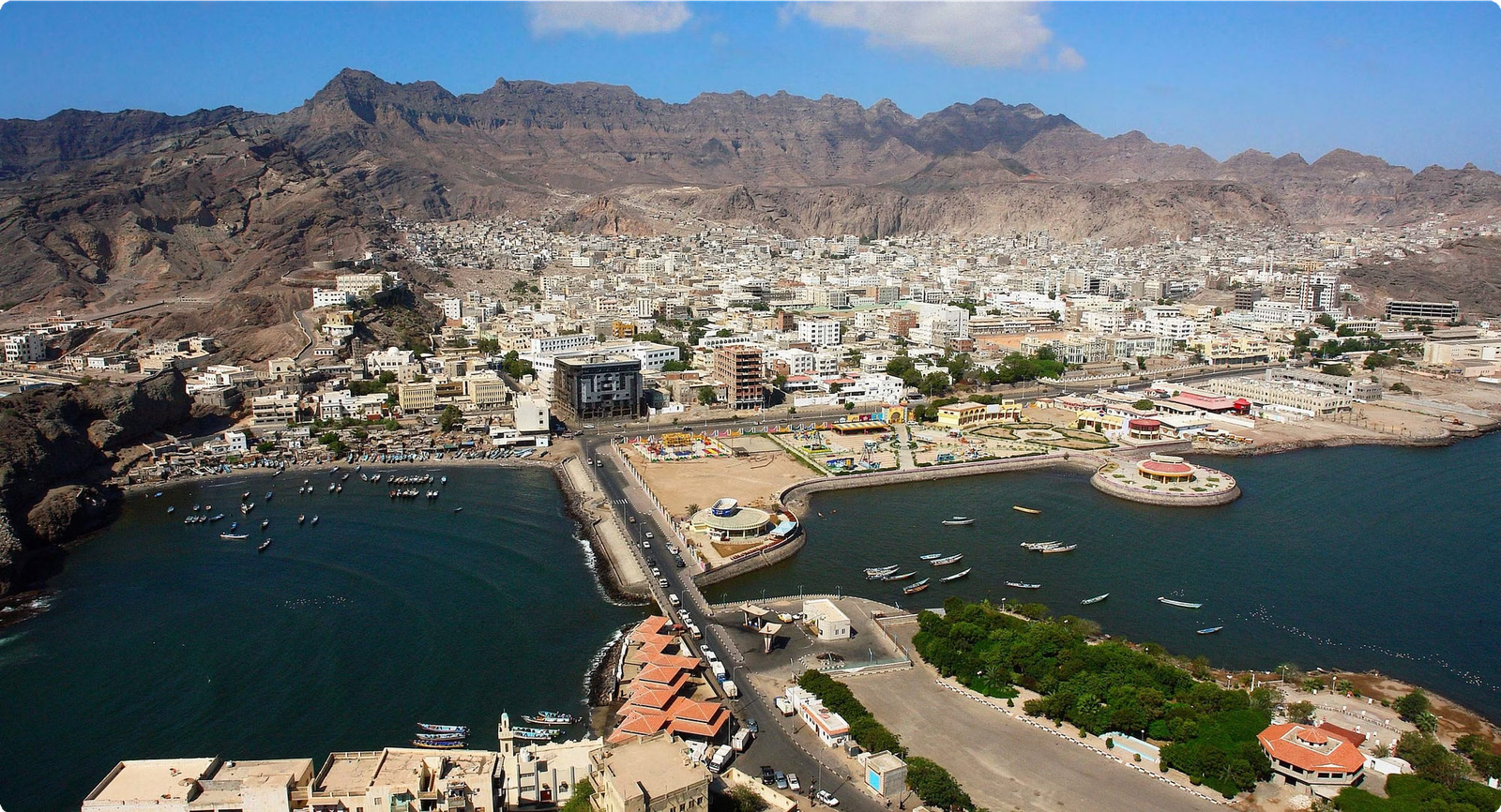
Visitors to Aden can explore its bustling port, historic architecture, and picturesque coastline. The city’s unique blend of ancient and modern influences offers a captivating experience for travelers interested in maritime history and coastal landscapes.
Al-Mukalla: The Coastal City
Al-Mukalla is a picturesque coastal city located in Yemen, renowned for its stunning natural beauty and rich maritime heritage. Nestled along the azure waters of the Arabian Sea, this enchanting city boasts a vibrant blend of cultural influences and a thriving port that has been pivotal to the region’s trade and economy for centuries.

The city is adorned with traditional Arabic architecture, bustling souks, and lively waterfront promenades that offer captivating views of the ocean. Visitors can immerse themselves in the local culture, indulge in delectable seafood, and explore the historical landmarks that dot the cityscape, making it a truly unforgettable destination for travelers seeking an authentic Yemeni experience.
Shibam: the Ancient City of Mud Skyscrapers
Shibam, also known as the “Manhattan of the desert,” is a spectacular ancient city located in Yemen. It is renowned for its extraordinary architecture, featuring impressive mud skyscrapers that stand tall and proud against the backdrop of the desert landscape.

The city’s unique skyline of mud-brick high-rises is a sight to behold, providing a glimpse into the historical and architectural ingenuity of the ancient Yemeni civilization. Each mud skyscraper, known as a “tower house,” is a testament to the skill and craftsmanship of the local builders.
Visiting Shibam offers travelers the opportunity to immerse themselves in the rich cultural heritage of Yemen and witness the breathtaking juxtaposition of ancient architectural marvels against the vast expanse of the desert.
Socotra: the island paradise
Socotra is an enchanting island paradise located in the Arabian Sea. It is renowned for its otherworldly landscapes, unique flora and fauna, and pristine beaches. The island is home to the iconic Dragon’s Blood Tree, a fantastical umbrella-shaped tree with a distinctive red sap, as well as numerous endemic species found nowhere else on earth. Visitors to Socotra can explore the breathtaking Dixsam Plateau, venture into the deep canyons and caves, and relax on the tranquil beaches surrounded by crystal-clear waters.
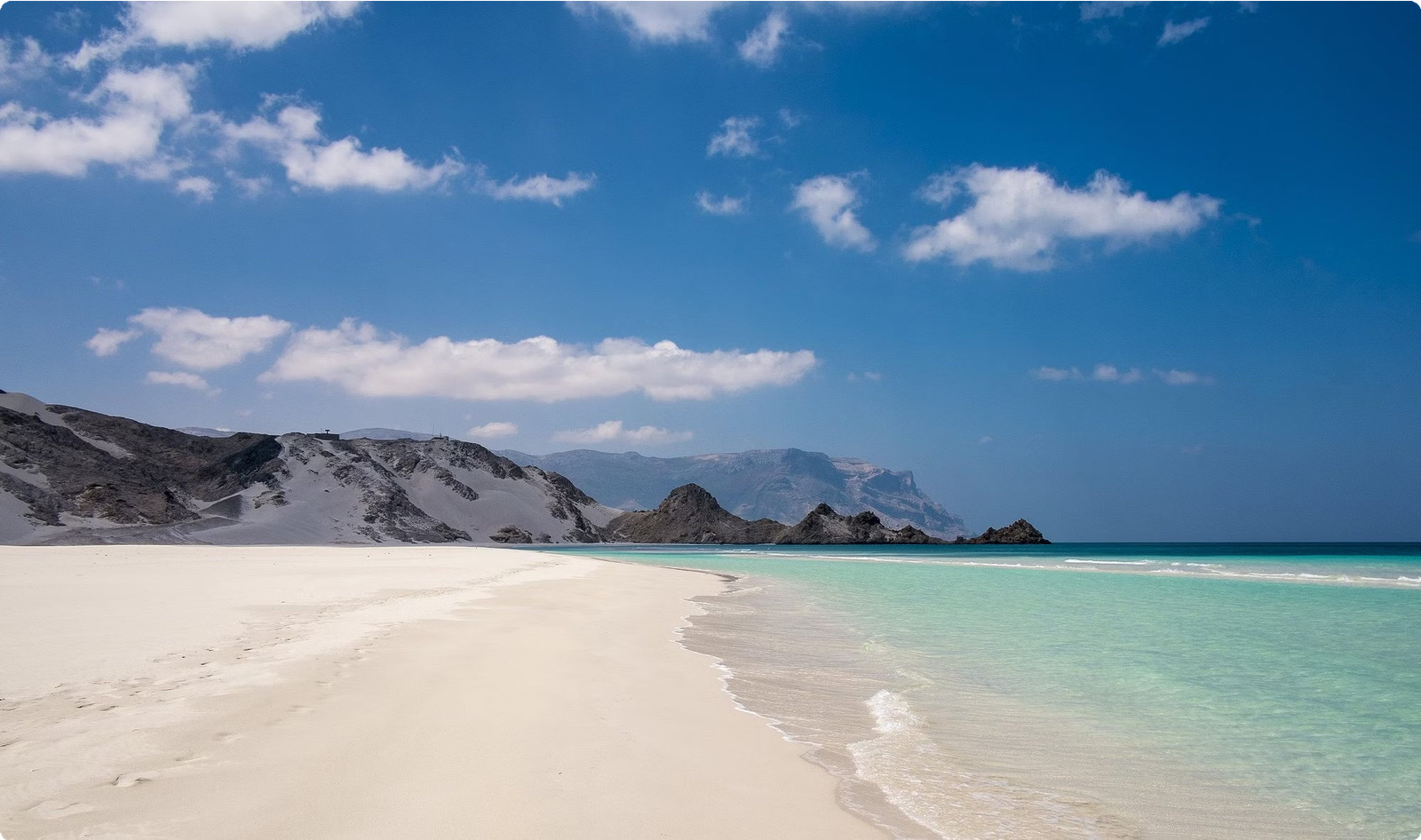
With its unspoiled natural beauty and rich biodiversity, Socotra offers an unparalleled experience for nature enthusiasts, hikers, and adventure seekers. The island’s remote location and distinct ecosystem make it a must-visit destination for those seeking a truly extraordinary and off-the-beaten-path travel experience.
Best places to travel for adventure in Yemen
Socotra Island: Located in the Indian Ocean, it’s known for its otherworldly landscapes and unique biodiversity. Visitors can explore the Dragon’s Blood Trees and experience endemic flora and fauna found nowhere else on Earth.
Al-Hajjarah: A mountain village perched on a cliff, offering breathtaking panoramic views and a chance to trek through its ancient stone paths, providing a thrilling adventure for hikers and photographers alike.
Wadi Hadhramaut: This expansive desert valley is a haven for adventure seekers, offering off-road expeditions, camel treks, and camping under the starry desert sky, providing an immersive experience in Yemen’s rugged beauty.
Conclusion and Final Thoughts
Upon exploring the diverse and rich culture of Yemen, it becomes evident that this historic land has much to offer in terms of its geographical beauty, cultural heritage, and warm hospitality of its people. As one delves deeper into the traditions, cuisine, music, literature, and architecture of Yemen, it becomes clear that the country holds a unique allure for travelers seeking an authentic and immersive experience.
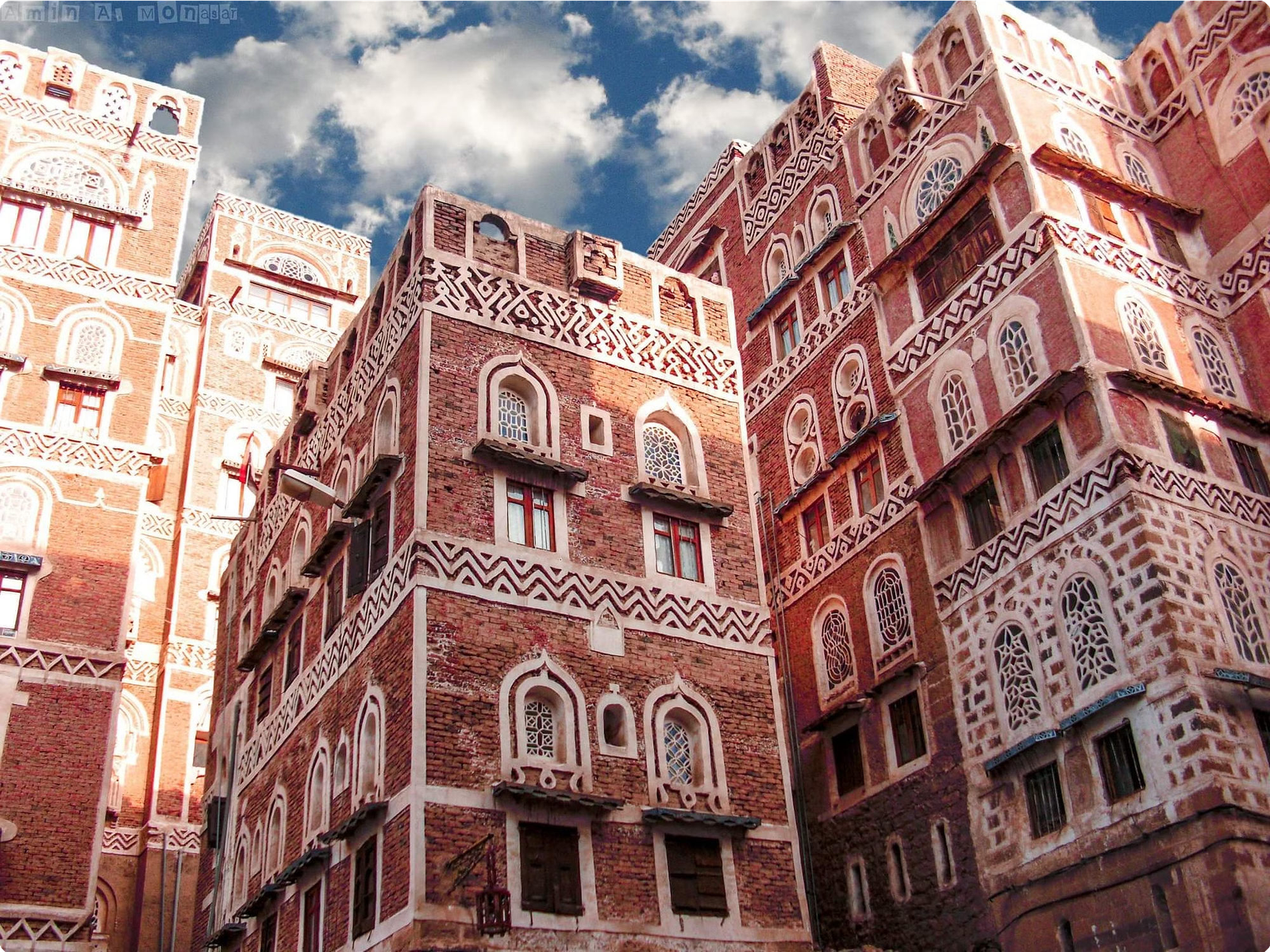
Whether wandering through the vibrant markets in Sana’a, indulging in the flavors of Yemeni cuisine, or marveling at the ancient mud skyscrapers in Shibam, the beauty and charm of Yemen is truly captivating. The rich history, stunning landscapes, and warm hospitality make Yemen a destination worth exploring and cherishing.